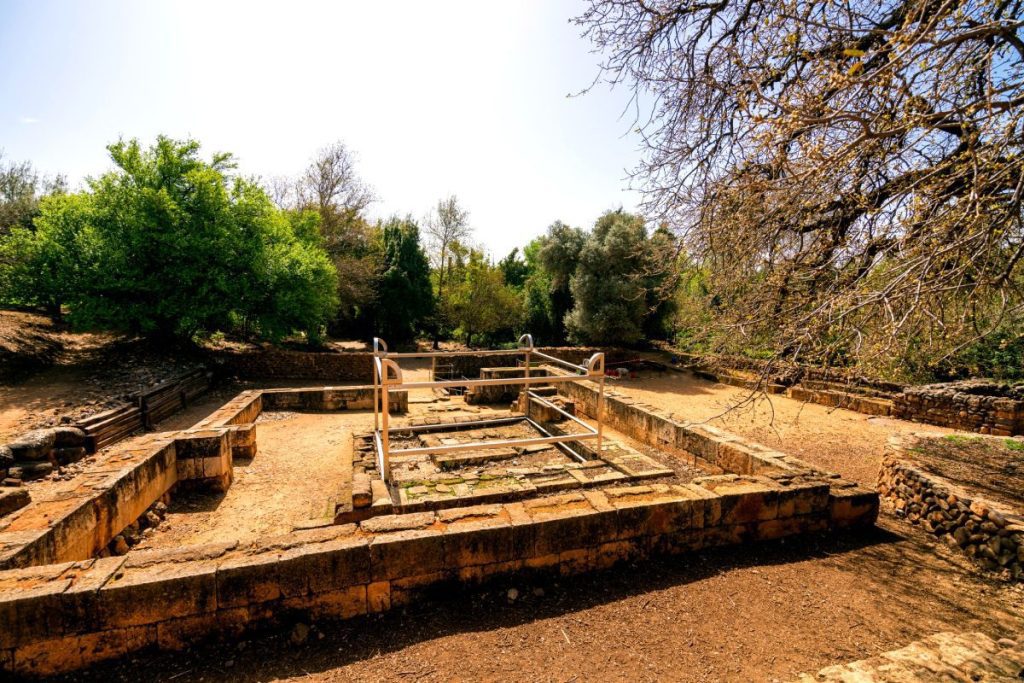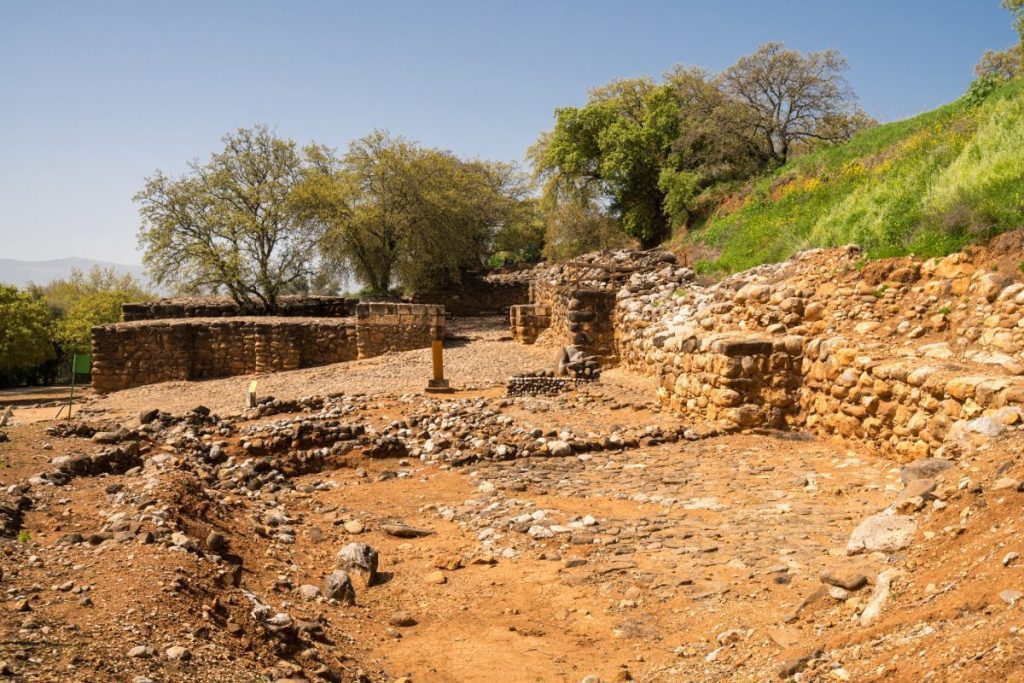Welcome to Tel Dan Nature Reserve, an enchanting sanctuary that seamlessly weaves together ancient history, lush landscapes, and serene tranquility. Nestled in the northern reaches of Israel, this remarkable destination offers a captivating blend of archaeological wonders and natural beauty that promises an unforgettable adventure.

Touring Biblical Dan and its Archaeological Marvels:
Begin exploring by stepping back in time through the archaeological remnants that grace Tel Dan. Wander through ancient ruins, including the Bronze Age city gate, and immerse yourself in the stories of civilizations that once thrived on this hallowed ground.
Biblical Connections:
Tel Dan holds a significant place in history and the Bible. Discover the famed “House of David” inscription, an artifact that echoes stories from ancient texts and provides tangible evidence of biblical narratives.
Touring Biblical Dan – Exploring the Hiking Trails:
Embark on a journey through nature’s embrace as you traverse the reserve’s scenic hiking trails. Meander alongside the glistening waters of the Dan River and witness the captivating fusion of greenery, waterfalls, and vibrant flora that paint the landscape.
Canopy of Trees:
Tel Dan is renowned for its dense, lush vegetation, creating a cool and shaded retreat. The towering trees form a natural canopy that invites you to relax, take a deep breath, and savor the serene ambiance that envelopes you.
Biodiversity and Wildlife:
The reserve’s diverse ecosystems provide a haven for a variety of wildlife. Keep your eyes peeled for colorful butterflies, birdsong serenades, and perhaps even glimpses of some of the region’s elusive inhabitants.
Educational Insights:
Engage with informative signs and exhibits that offer insights into the history, flora, and fauna of Tel Dan. Gain a deeper understanding of the ecological balance that sustains this remarkable sanctuary.

Photographer’s Paradise:
Whether you’re capturing the play of sunlight through the trees, the intricate textures of archaeological remains, or candid moments of fellow explorers, Tel Dan offers a plethora of picture-perfect scenes.

Kayaking Adventures:
For an added thrill, consider kayaking along the gentle currents of the Dan River. This unique perspective allows you to immerse yourself in the natural beauty while enjoying a touch of adventure.
Picnic Paradiso:
Pack a picnic and relish in the joy of al fresco dining amidst the reserve’s serene landscapes. Find a shaded spot, savor local flavors, and let the symphony of nature be your background music.
Embrace the fusion of nature and history as you wander through the enchanting realms of Tel Dan Nature Reserve. Whether you’re drawn to archaeological mysteries, serene hiking trails, or the harmonious symphony of natural wonders, this reserve promises a rejuvenating experience that awakens the senses and soothes the soul.







